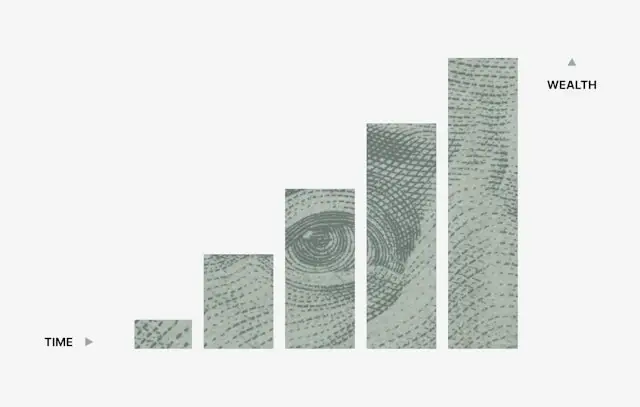Inflation impacts us all, yet many don’t fully grasp what it truly means or why it matters. From rising grocery bills to higher costs for everyday items, inflation shapes your purchasing power and influences the broader economy — including jobs and wages.
In this article, we break down what inflation is and how it’s measured and explore the main causes driving price increases.
What Is Inflation?
At its core, inflation is the general increase in prices for goods and services, causing a steady loss in the purchasing power of money. For example, what $100 could buy last year now buys fewer items today due to rising costs across many sectors, including energy, healthcare, and housing costs. This rise in the cost of living affects everything from income and wages to rent, home prices, and borrowing rates.
Inflation is a key indicator economists and investors watch closely because it influences financial decisions and the overall stability of economies like the United States. It can impact consumer behavior, corporate spending, and government actions—all vital to understanding how inflation shapes our life and finances.
Definition and Measurement of Inflation
To accurately track inflation, economists rely on several important indexes. The most widely used is the Consumer Price Index (CPI), which measures price changes in a fixed basket of everyday goods and services, such as fuel, food, entertainment, and healthcare. The CPI gives a snapshot of inflation’s effect on consumers during specific periods, typically on a year-over-year basis.
Another critical component is the Producer Price Index (PPI), which tracks the prices that companies receive for their products at the wholesale level. The PPI acts as an early warning system, signaling potential inflation before it reaches the consumer side.
For example, the U.S. inflation rate was approximately 4.9% in 2024, down from nearly 7% in 2023—a sign of instability easing but still signaling ongoing price pressures across sectors like energy, commodities, and housing.
Causes and Types of Inflation: Why Prices Rise
Inflation can take many forms and stems from multiple causes. Key factors include
- Demand-pull inflation: When consumer demand outpaces supply, prices rise, often driven by population growth or increased cash flow due to lower borrowing costs.
- Cost-push inflation occurs when increasing expenses for raw materials—like fuel and commodities—force businesses to raise their prices. This effect is often intensified by shortages stemming from events such as the COVID-19 pandemic or supply chain disruptions.
- The wage-price spiral: Higher wages lead to increased consumer spending, which can cause companies to raise prices further, creating a feedback loop.
- Inflation can also be influenced by government agencies’ fiscal policies, the balance of supply and demand, and global economic conditions (e.g., inflation in Japan or other major economies).
Why Inflation Matters for You: Finance Tips and Takeaways
Understanding inflation is crucial for managing your finances and making smart decisions, especially in an environment with rising mortgage rates, fixed-rate mortgages, and fluctuating treasury inflation-linked bonds. Here are some key takeaways to
Understanding inflation is essential for managing your finance and making informed decisions, especially in today’s environment marked by rising home prices, increasing mortgage rates, and fluctuating treasury inflation-linked bonds. Whether you’re an investor or a homeowner, here are key takeaways inflation experts want you to know:
- Inflation directly impacts the return on your investments and the real value of your debt. For example, a fixed-rate mortgage can be a smart option during inflationary periods because your monthly payments remain stable even as income, rent, and borrowing costs rise.
- Rising housing costs and rent should be carefully factored into your budget and long-term financial goals to avoid unexpected loss in purchasing power.
- Inflation can erode your cash savings unless you invest in assets that keep pace with or exceed inflation’s effect, such as certain stocks or commodities.
- Monitoring inflation indexes and understanding its behavior in key sectors like healthcare, entertainment, and fuel will help you better plan major purchases and protect your finances.
- Stay alert to economic indicators and actions from government agencies, especially those hinting at a potential recession or market instability that could affect job security and income.
By deepening your understanding of inflation’s multiple types and causes, you’re better equipped to navigate the financial challenges it presents across the United States and other nations.
Primary Causes: Demand-Pull and Cost-Push Inflation
Demand-pull inflation occurs when demand from consumers outpaces available supply, leading to higher prices. For example, during busy holiday seasons, high demand and limited stock push businesses to increase prices. After the 2021 post-pandemic recovery, government stimulus and rising GDP led to a surge in consumer spending, driving up the Consumer Price Index (CPI).
Cost-push inflation occurs when increased production expenses compel businesses to raise prices for consumers. Rising prices for raw materials, labor, and commodities cause overall price increases. In 2022, crude oil prices jumped from around $70 to over $120 per barrel due to global events, raising transportation and manufacturing costs and, in turn, consumer prices.
Grasping demand-pull and cost-push inflation clarifies how price rises are connected to supply, demand, and the costs of production. These factors also contribute to the wage-price spiral, where wages and prices push each other higher.
Knowing these causes helps make better financial decisions to protect your money and investments during inflationary periods.
Inflation’s Effects on Economy and Wages
Inflation affects everyone—from households adjusting their budgets to policymakers managing economic stability. High inflation erodes the value of money, significantly reducing purchasing power. For example, what $100 could buy in 2020 may now require $120 or more, as prices rise across goods and services. This shift forces many consumers to alter spending habits, often choosing more affordable alternatives over premium brands.
Economic Implications
Inflation’s effects extend beyond individual consumers to the broader economy. Elevated inflation discourages saving and investment—both essential drivers of sustained economic growth. When consumers expect prices to rise, they tend to spend immediately rather than save, causing a temporary surge in demand. However, persistent inflation can destabilize the economy by raising business input costs, which may lead to layoffs or reduced hiring, creating a cycle that suppresses growth.
Additionally, high inflation can undermine confidence in the national currency. When people doubt the currency’s future value, they often seek alternatives such as commodities or foreign currencies, which can further weaken the currency and accelerate inflationary pressures.
Effects on Wages
The relationship between wages and inflation is critical. Typically, wage increases lag behind rising prices. While nominal wages may grow by 3%, inflation rates of 5% or higher mean real earnings decline. In practical terms, workers’ purchasing power shrinks even as their paychecks grow nominally, intensifying financial strain on households.
Understanding this dynamic is crucial for recognizing the challenges faced by individuals and the broader economy. Historical episodes of extreme inflation provide valuable insights into how such conditions impact economic and social stability.
Historical Inflation Examples
The hyperinflation experienced in post-World War I Germany vividly illustrates the dangers of runaway inflation. In 1923, prices soared to unimaginable levels—for instance, the cost of a loaf of bread ballooned from 250 marks to 200 billion marks within a year. Citizens faced the surreal necessity of transporting cash in wheelbarrows just to buy basic goods, exemplifying economic chaos and loss of confidence.
In contrast, the 1970s U.S. inflation was driven by geopolitical factors such as oil price shocks, leading to stagflation—simultaneous high inflation and unemployment. Inflation peaked near 15%, squeezing consumers who faced rising costs alongside stagnant wages and job insecurity.
These historical lessons underscore how inflation impacts daily life—from food affordability to major financial decisions like home purchases. They highlight the delicate interplay between price stability, economic growth, and consumer confidence.
Looking Ahead
While past inflation crises serve as warnings, modern monetary and fiscal policies aim to prevent similar disruptions. Effective management of inflation is essential to maintain economic stability, protect purchasing power, and foster sustainable growth.
Solutions for Controlling Inflation
Controlling inflation requires a coordinated approach combining monetary, fiscal, and structural strategies. One of the primary tools involves adjusting monetary policy. Central banks influence inflation by manipulating interest rates to regulate the money supply. Raising interest rates increases borrowing costs, which tends to reduce consumer spending and business investment. When loans become more expensive, households and companies reconsider major purchases and expansion plans, effectively easing inflationary pressures. For example, recent rate hikes from near zero to above 4% demonstrated how tightening monetary policy can slow inflation and stabilize prices.
Fiscal Policy’s Role
Monetary policy alone is not sufficient; fiscal measures also play a critical role. Governments use taxation and public spending adjustments to influence economic demand. Reducing budget deficits lowers the circulating money supply, dampening demand and mitigating inflation risks. Conversely, during recessions or periods of high unemployment, increased public spending can stimulate growth, balancing immediate economic support with long-term inflation control. In essence, fiscal policy acts as a governor to rein in excessive inflation without disrupting essential economic activity.
Consumer Behavior and Education
Beyond policy, educating consumers on prudent financial decisions during inflationary periods is vital. Panic buying can intensify price surges, while informed, deliberate spending and saving strategies help moderate demand. Encouraging thoughtful consumption can reduce unnecessary expenditures and alleviate inflationary pressures at the micro level.
Supply Chain Optimization
Supply chain efficiency is another key factor in controlling inflation. Smooth logistics ensure consistent product availability, preventing shortages that drive prices upward. Historical data confirms that disruptions—from raw material shortages to transportation delays—often exacerbate inflation. Strengthening supply chain resilience directly contributes to price stability across industries.
Managing Expectations
Lastly, inflation control hinges on managing future expectations. When consumers anticipate rapid price increases, they tend to accelerate purchases, further increasing demand and inflation. Transparent communication and credible policy measures help anchor expectations, preventing self-fulfilling inflationary cycles.
By integrating these monetary, fiscal, behavioral, and structural approaches, economies can more effectively manage inflation and promote sustainable growth.
Learn How Inflation Shapes Market Trends and Investment Decisions
At Rosenberg Research, we believe that educating consumers on smart financial choices during inflation is key to minimizing unnecessary spending and managing budgets effectively. Understanding how inflation impacts your purchasing power empowers you to make confident decisions rather than impulsive buys driven by fear of rising prices.
We offer a free trial so you can experience firsthand how our insights and tools support smarter spending strategies in inflationary times.


